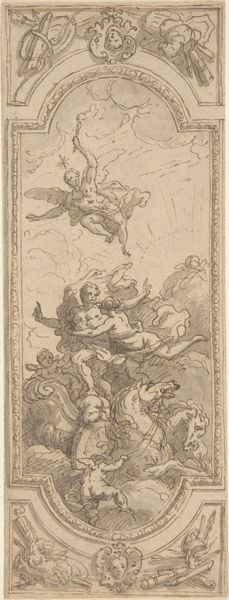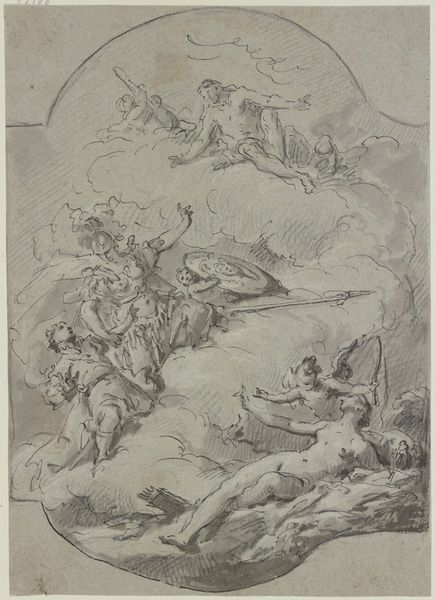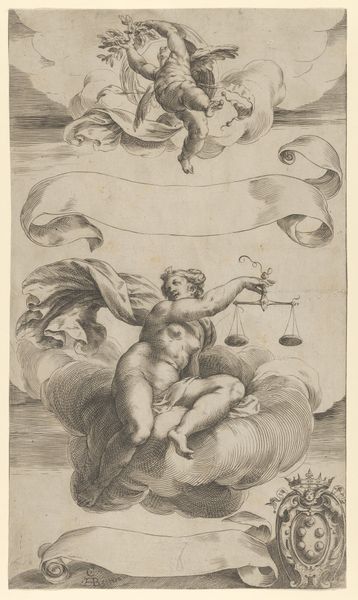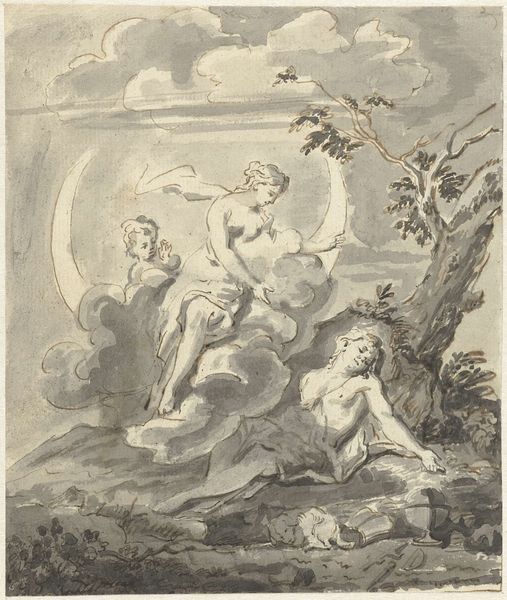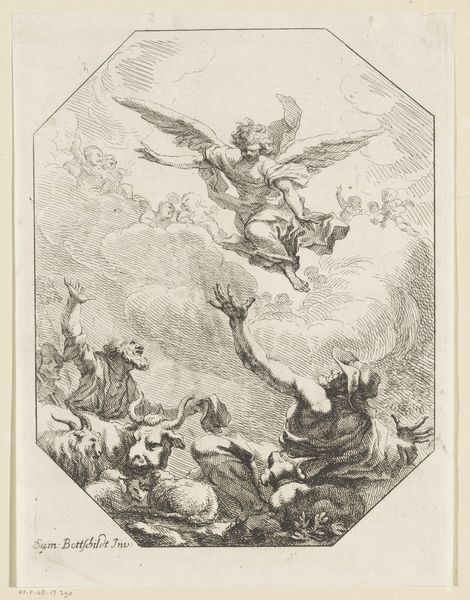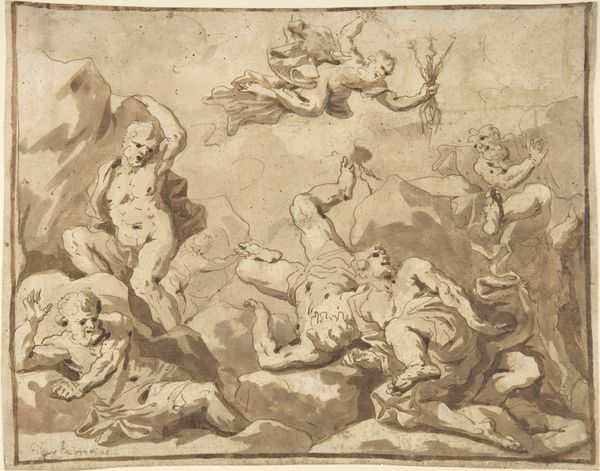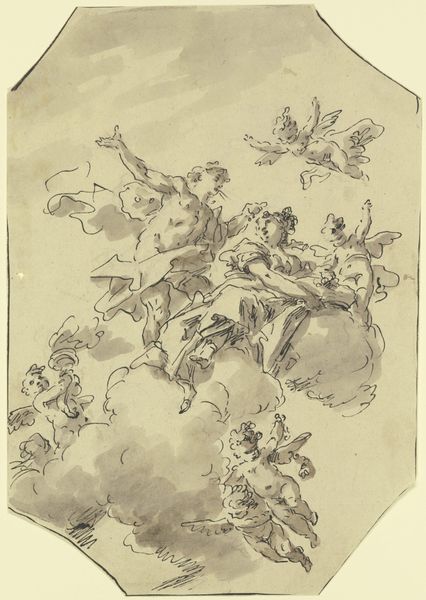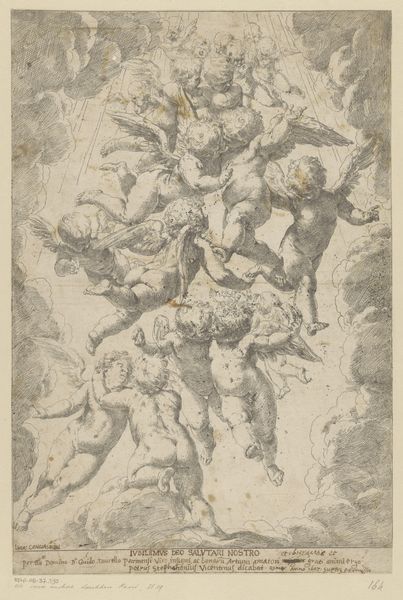
drawing, print, paper, ink, chalk
#
portrait
#
pencil drawn
#
drawing
#
baroque
# print
#
pencil sketch
#
figuration
#
paper
#
ink
#
pencil drawing
#
chalk
Dimensions: 434 × 284 mm
Copyright: Public Domain
Curator: Here we have a drawing attributed to Giovanni Battista Gaulli, commonly known as Baciccio, depicting "Four Putti." While its precise date remains undetermined, its style firmly places it within the Baroque period. Editor: It’s… playful. Look at the softness of the chalk and ink; it gives a lightness to the cherubic figures, making them feel buoyant, like they might actually float right off the paper. Curator: Absolutely. The putti themselves are potent symbols in the visual vocabulary of the Baroque—they often represent divine love, innocence, and spiritual connection. You'll find these figures recurring throughout religious art of the era. Consider how they link to the classical idea of Cupid and the playful god of love, Eros. Editor: And, materially, what interests me is the provisional nature of the drawing. It feels like a sketch, a fleeting thought captured quickly with readily available materials like chalk, ink, and paper. This work is at the Art Institute of Chicago, a context that transforms even a sketch into a treasured art object. The availability and cheapness of those materials contrasts directly with the preciousness that it holds now, here, today. Curator: Precisely. It's fascinating how these artistic choices evoke emotions and reinforce a broader cultural narrative of spirituality and childhood innocence. The swift, almost effortless strokes, also contribute to the sense of otherworldly grace. Editor: Although, one could also argue that the mass reproduction of cherubic images desensitized people to those symbols over time. What once was rare became almost banal due to its overwhelming consumption and constant use. Curator: That’s an astute point. It’s a complex history to consider. Nevertheless, it is remarkable to witness how this particular configuration, using relatively accessible materials, could convey a profound sense of joy and lightness, even to this day. Editor: Agreed. It's a reminder of the ever-shifting relationship between artistic labor, accessible materials, and cultural symbolism. The artwork reflects the historical processes involved and then our consumption of images today.
Comments
No comments
Be the first to comment and join the conversation on the ultimate creative platform.
